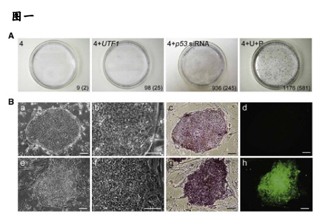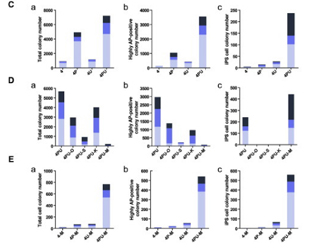The 2012 Nobel Prize in Physiology and Medicine was announced on October 8 and was presented to John B. Gurdon of the United Kingdom and Yamanaka of Japan. The former is a pioneer of "nuclear transfer" and demonstrates that cell differentiation is reversible; the latter is a simple method of reprogramming differentiated mature somatic cells into multifunctional stem cells (iPS). Gene chips have not been absent from this session of stem cell research. Professor Deng Hongkui of Peking University published two papers in Cell Stem Cell and Cell Research using Hualian HOA and MOA chips to verify factors that can improve cell reprogramming. Make iPS cells safer and more efficient.
More efficient iPS cell manufacturing Professor Deng Hongkui of Peking University and others screened many candidate factors that might improve the efficiency of cell reprogramming. In experiments with human skin fibroblasts transformed with iPS cells induced by Oct4, Sox2, Klf4 and c-myc, the addition of other factors showed that p53 siRNA and Utf1 could help the formation of AP-positive colonies. If both p53 siRNA and Utf1 were added, the efficiency was increased by a factor of 200 (Fig. 1A). They found that some of the colonies did not have the ability to differentiate, so these colonies were calculated based on whether they have similar cell morphology to human embryonic stem cells, and the number of iPS cells generated was calculated (Fig. 1 C~E). (a) is total_colonies, (b) is high AP-positive colonies, and (c) is iPScolonies. The results demonstrated that simultaneous addition of p53 siRNA to Utf1 (4PU) significantly increased the number of iPS cells produced (Fig. 1cc).
Next, the researchers wanted to understand whether p53 siRNA and Utf1 could replace the four reprogramming factors of Oct4, Sox2, Klf4 and c-myc. One of the transcription factors was removed by subtraction, and it was found that Oct4, Sox2, and Klf4 were irreplaceable, and only the expression of c-myc was removed to generate iPS cells (Fig. 1Dc). Further experiments have shown that the addition of Utf1 alone can replace the role of c-myconcogene (Figure 1 Ec) in cell reprogramming.
Professor Deng's research team used Hualian Biotech Human OneArray® chip to analyze the reprogramming of iPS cells, human embryonic stem cells (hESCs) and gene expression profiles of somatic cells, further demonstrating that iPS cells are similar to embryonic stem cells. Global gene expression profile (Figure 2).
Subsequent scientists have found that adding small molecules like drugs can improve the efficiency of reprogramming. Some small molecules can even replace the transcription factor genes required for some iPS cells. For example, a transforminggrowth factor (TGF)-β inhibitor called 616452 can replace the function of the Sox2 gene. Professor Deng Hongkui's research team wants to know whether all exogenous stem cell transcription factors can be replaced by these new small molecules to achieve the purpose of completely chemically producing iPS cells.
 Download the full text
Download the full text



Field Micro-Spray,Citrus Micro Spray,Navel Orange Floor Outlet Micro Spray,Fruit Tree Floor Outlet Micro Spray
Shandong Yibiyuan Water-saving Equipment Technology Co., Ltd. , https://www.cnybyjs.com